STEPHEN TRAMONTANA – Interview
Stephen King has scared us countless times over 40 years, and has done so every way imaginable. However, there are two short stories in particular that are not only frightening, but considered gross. One of those is the short story A VERY TIGHT PLACE. This story is about a man trapped in a porta potty. Director Stephen Tramontana took this story, and has now brought it to the big screen, and I must say his adaptation is great!
Stephen Tramontana was born in Durango, Colorado on February 9, 1980. After completing his elementary and high school years, he went on to study at the College of Santa Fe. He later settled in New York, working at NBC before moving on to Los Angeles, California. In 2005, he joined FWE Entertainment, there he coordinated post-production at the Syfy Channel. In 2009, he was recognized for his film EXIT STRATEGY, and in 2011 he wrote the film WELSHGATE, a final in the Austin Film Fest. By 2014, Stephen co-wrote, and directed the horror/comedy, KILLER PINATA. He then turned his talents to the comic book world with his first comic, ANYA. In 2017, his film NORMAN was a quarterfinal Bluecat Screenwriters Competition contender. He continued his comic book work with GR-8 in 2018. However, with all of these credits to his name, it seems befitting that just this year, 2019, Stephen Tramontana would step into the Stephen King universe, directing the Dollar Baby short film A VERY TIGHT PLACE. At present he is living in Chicago, Illinois with his wife, and their dog Tom Hanks (yes, Tom Hanks).
I had the privilege of doing this interview with director, Stephen Tramontana, and I hope you will enjoy it as much as I did.
Tony Northrup – Growing up in the small town of Durango Colorado, your love for film began at a very young age. Tell us about some of the things you filmed with your friends, and what were some of your inspirations back then?
Stephen Tramontana – They were all horror-related, haha. I think we were probably 9 or 10 when my buddy and I picked up that camcorder, but I remember one of the earliest shorts we made was called, The Sterling Massacre , and we played both the victims and the masked killers, and just kind of switched out who was killing, and who was getting covered in ketchup. My earliest inspiration was definitely Wes Craven. I just fell in love with the creativity of, A Nightmare on Elm Street, and Freddy-mania in general, which lead me to go down the franchise rabbit hole of Halloween, Friday the 13th, etc. I was a huge B-movie fan, even at that age. The Charles Band Full Moon films became kind of a guiding light for me, this idea that you could churn out low budget horror films, but they were really cool. I would read about them in Fangoria and immediately bike down to the video store to try and find them. Non-Full Moon things like Ticks, Dolly Dearest, Return of the Living Dead III, etc.
TN – You worked in television, and making films for the Syfy Channel. What is more challenging: television or feature films, and why?
ST – I would call it a draw, they both have unique challenges. I was in post production on the Syfy films and the budgets were decent, but we still had the classic issues of “fix it in post” – which, as we know, is the worst idea, haha. So we would inherit all the issues stemming from pre-production and production, and that just made our job 10 times harder, because we still had our regular post work, which was also time consuming. I remember we were filming Stan Lee’s Lightspeed, and that production was in Utah, the first movie we tried shooting in the States and not Romania. We’re shooting on film, and the first footage comes back to LA with no sound. I call the Unit Production Manager, ask where the sound is, turns out the recording equipment malfunctioned, so they decided to shoot the entire day without sound, and it’s ALL dialogue scenes, haha. So we had to edit dialogue scenes without sound, then bring the actors back to re-record everything from that day. It was that kind of thing all the time.
TN – You wrote a comic book in 2018, GR-8, share with us some of your thoughts about the late Stan Lee, and how your love of comics came about?
ST – It’s tough to say something that hasn’t been said already about Stan “The Man” Lee. I’m just very thankful that destiny kind of put him at Marvel during its worst period and, much like his creations, he rose to the challenge and built something amazing. I discovered Marvel comics when I was 10, and I had probably read them for about a year or two before realizing who Stan Lee was, which is a testament to him. I mean, don’t we all want our creations to outlive us? Funny story about Stan Lee, I actually got to work with him a bit on Lightspeed. That was his story, 100%. The villain was originally supposed to turn into this man/snake creature, similar to Serpentor in GI Joe, and we didn’t have the budget – it was a good budget – it just couldn’t afford that particular effect. So our office is trying to figure out how to deliver this news to Stan Lee, and I’m the only one in the room that is a comic book nerd. So I raise my hand and explain that we need to couch it as an evolution of character. Happens all the time in comics, Beast evolves into a furry blue creature, Brainiac goes from alien to robot, etc. So I go with Jeff, our producer, to visit Stan and I’m explaining this to him, and that we can have the villain become the full man-snake in the sequel. Stan gets it and loves the idea, and I’m like, I learned it from you, man! That was a really cool moment. But I’ve always loved comics. I have a ton of them, I pay artists for independent commissions, and one day I’ll probably transition from making films to just making comics. It’s something that’s been in my DNA since birth, I was the kid running around with a bath towel on my back pretending to be Superman or Batman. Superheroes are a unique American creation, representing the best of our ideals and intentions. Obviously, there are flaws, but I think they are one of our finest creations.
TN – In 2019, you made the Stephen King Dollar Baby short film, A VERY TIGHT PLACE. When and how did you first learn about the Dollar Baby Program?
ST – In film school. At least when I was in film school, the infamous Frank Darabont Dollar Baby was talked about. We were about five years away from YouTube, so there was no real way to see it, but the story was out there. If you wanted to option a Stephen King short story, you could.
TN – Out of all the Stephen King short stories, what attracted you the most to this one?
ST – I remember, even on first read, thinking it was tailor-made for a short film. I don’t think it could be sustained as a feature, but I always felt that if I were brought in on some anthology show like The Twilight Zone, and they asked me to pitch an episode, this is one that I would make the case for. It has humor, it has tension, it’s gross, and everyone likes a good revenge story. I was just kind of surprised it never happened. So I just decided to do it myself.
TN – What did you change to make this your own version of King’s story?
ST – So the biggest change is that I switched out Tim Grunwald for Ginny Grunwald. Ginny is not really a character in the short story, there’s a passing mention of her as kind of this younger trophy wife with plastic surgery who leaves him, so I had to create Ginny and apply what I could of Tim to her, while still making her her own character. Part of this motivation was that I feel general audiences aren’t that familiar with this story, so this may be the first time they’re seeing this. If you have these two guys who hate each other, and one calls the other up and says “meet me in this random place”, you know it’s a trap. You would never go. Whereas, by having Ginny, at least it keeps the mystery of the story a little longer. Also, I think she’s a much more nuanced antagonist than Tim. I want to make it clear that I’m NOT suggesting I’m a better writer than Stephen King, haha, I’m just saying that, from a film story perspective, a grieving widow is a little more sympathetic. So that was the big change. The second change was the ending, which was more of a tiny adjustment. In King’s original text, it’s kind of just a vague threat and Curtis leaves. My feeling was, in a revenge story, someone has to get theirs, frontier justice must be dealt. It brings the story full circle, we start on Curtis reading Tim’s obituary, and end with him watching Ginny die. Death of a Grunwald surrounds him.
TN – At what age, and how did you first discover Stephen King (his books, films)? What is your favorite of both of these?
ST – Very early. I remember my mom reading IT to me as a bedtime story around the age of 7 or so (and yes, she skipped over the sewage gang bang). I remember bringing Bachman books with me to second grade. In the 80s, every elementary school was filled with kids secretly reading their parent’s King novels, haha. In terms of favorite stories, I love Pet Sematary, Cujo, Firestarter, Blaze, and Needful Things. I n terms of films, I love Christine, Misery, the 1989 Pet Sematary, and Cujo.
TN – So many fans want adaptations to be as close to the book as possible, how do you handle the pressure to keep the fans happy?
ST – I think you have to look at what appealed to you about the story, and hope that appealed to other people, too. I’ve adapted Shirley Jackson as a screenwriter, and now King, and in both cases you look for the waypoints, the things that fans will be looking for, and then what you can do with the material outside those waypoints for clarity or timing. Besides the character swap, I tried to keep as close to the material as possible within the time constraints of a short film. I would say the dialogue is 80% King’s. I know King’s dialogue grates on some people, but I like it, and I really like with something pulpy like this. But I figured as long as we kept the classic elements like Betsy, why they were fighting, his escape, etc, we were in good shape.
TN – What was the main goal you wanted to achieve with this film?
ST – I wanted to make the movie that had been in my head for 10 years, and I feel we did that.
TN – Where was the film made specifically, and were there any obstacles you had to overcome while filming there?
ST – We had a REALLY difficult time finding a Durkin Village location. We probably talked to 8 or 10 different construction sites around Chicago and Indiana and no one wanted to give us permission to film. Which I understand, it’s a construction site, but we’ve made a couple of films at this point, we know what we’re doing, and we have production insurance, haha. So it was really frustrating and kind of scary, because we had about three weeks left before we had to shoot the Durkin stuff and had no location, which meant my prep time was winding down. Finally, we were able to get permission from the city of Chicago to film at Lathrop, which is the oldest housing project in Chicago. As luck would have it, they were rebuilding it, so it was abandoned when we were filming, which helped with both the production design and just not have a bunch of people around while we were trying to film. Some Lathrop residents even came in and helped out, so it was a fun day. It was hot, it was like 80-something degrees, haha, but we got through it. The other issue was filming in the porta potty itself. We bought ours fresh from the manufacturer, and trying to tear it apart to get film and lighting equipment in there was a real challenge. It’s all rivets and the plastic is harder than you realize. Trying to get just one piece of it off was insane. There were days where I was just staring at this thing, going what was I thinking? Why did I want to do this? I’m an idiot.
TN – How long was the film shoot, and the process from start to finish?
ST – All in, we shot for 6 days, from October to December. The last day was all of Danny’s stuff inside the porta potty, which was interesting. His exterior stuff in Durkin, we filmed that in October in the heat, and here we were, you know, two months later shooting the interiors in 40 degree weather. When he’s upright, we were actually outside, so before each take, Danny had to hold ice in his mouth so we wouldn’t see his breath. In terms of the overall process, about two years. We originally optioned the material when we were making Eyelash, because I thought we would wrap Eyelash, then immediately move to prepping Tight Place. But Eyelash had a much longer post than I anticipated, so that pushed this one and I actually had to go back to King’s office and request an extension. We showed them Eyelash, and I think that gave them the confidence that we knew what we were doing. Our post was January through April, we literally locked print about two weeks before our debut in the Windy City Horrorama, haha. So, 0 to 60. Always 0 to 60.
TN – Tell us a little bit about the auditions, and what specifically did your lead actors bring to the table that won them the role?
ST – So we didn’t really have to audition for this one, which was nice. We knew from the get go that Joette was going to be Ginny. We’ve worked with Joette on multiple projects, starting with Killer Piñata, and we’ve used her in every movie since. She’s just such a joy to work with, such a calming presence on set, and the other actors just adore her. Generally, when I’m prepping a movie, I’m thinking, what do we have for Joette? I just knew, having worked with her, she could deliver on this, and she does, some of her line reads are my favorite. “Tim turned to me and said, there is justice in this world”, is probably my favorite line delivery in the whole thing, I just love how she relishes that line. In terms of the lead, I pretty much knew that I wanted Danny. Danny came really close to playing the jerk boyfriend in Eyelash, and when we didn’t use him for that, I kept him in mind for other things. We auditioned a couple of other actors, just in case Danny wasn’t available, but it turned out he was! Danny surprised me. First, in real life, he’s the nicest guy in the world. But he kind of developed what he called the Donald Trump Jr. for Curtis, and once he explained that to me, I was fully onboard. For Vinton, I had known Joe DeBartolo for a while. I actually met him at a screening for Killer Piñata, he was in the movie before ours and I definitely wanted to work with him, so this was a nice way to do that. For Tim Grunwald (aka TMF), that was reaaallly tough. We just couldn’t find anyone we liked, and I was starting to think we wouldn’t. Then Joette says to us, I just worked with this guy who played my husband and he was great. Then she shows us some of the set dressing photos they took together for the other film, and it was perfect. So that’s how we got Ron Beecher to join us. He came in close to the end of production, so it was a real save. I’ve never had that happen before. We’re usually full cast before we start production.
TN – What is your greatest moment so far with the success of A VERY TIGHT PLACE?
ST – I’m not sure that we’ve seen it yet, we’re just getting started. But I will say, so far, so good. We’ve had some good reviews and write ups, and we were just invited to take part in a screening series at the George Eastman Museum, which is a real thrill for me. I’m just looking forward to continue to getting this in front of people, I’m very happy with how it turned out.
TN – A VERY TIGHT PLACE is considered one of the top two gross Stephen King stories he’s ever written. What did you use for the “human waste” in the porta potty scenes? How difficult was it to film in (dare I say it), a tight place? Haha.
ST – The human waste was created by our great effects person and production designer, Catherine Woods. She had worked with Joette before, and Joette referred her to us, and I think Catherine did a great job. She made some plastic fake poops for the logs, so to speak, and the rest was this mix that had a potting soil base. Catherine was very considerate about Danny, and using things that wouldn’t irritate his skin, as she knew he would be in there for a while. As a last step, we would add bits of toilet paper, random paper, and blue gel for that blue sanitizer that you always see in those bowls. In terms of shooting, once we were in the porta, VERY difficult ha, for the reasons I previously stated.
TN – What Stephen King story would you like to adapt on a larger scale?
ST – It would either be Blaze as a feature, or Hearts in Atlantis as a feature or limited series. If it was a feature, then I would adapt the actual story Hearts in Atlantis, about the college kids and Vietnam. I think that has a lot of potential to be a Stand by Me, coming of age story. If it were a limited series, then I think you could adapt each section as its own episode. But those are the two I would be most interested in.
TN – Where can fans see the film? Will it be in any film fests this year?
ST – So we’re still sorting the fests. They’ll be able to see it in Rochester in October, and our fans in the Netherlands can see it in September there. We’ll hopefully announce more dates soon!
TN – You have a pet with a very unusual name. Can you tell our readers his name and why? (haha)
ST – Haha, I think you mean my dog, Tom Hanks. We call him Hanks. My wife and I both love Tom Hanks, because we’re human beings that exist in this time and space.
TN – Lastly, What is next for Stephen Tramontana?
ST – For next projects, we’re just finishing our last day on our new short as I write this. It’s called Grief Counseling, and it’s probably the grimmest thing Angry Mule has ever produced, so we’ll be lightening it up going forward. We have a couple of cool web series ideas that we’re starting to firm up, and I’m definitely ready to make another feature, so I’m just getting my head around that to hopefully film next year!
Tags: STEPHEN TRAMONTANA, STEPHEN TRAMONTANA interview




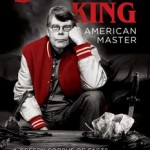

 UNA SPIEGAZIONE PER TUTTO – Gábor Reisz
UNA SPIEGAZIONE PER TUTTO – Gábor Reisz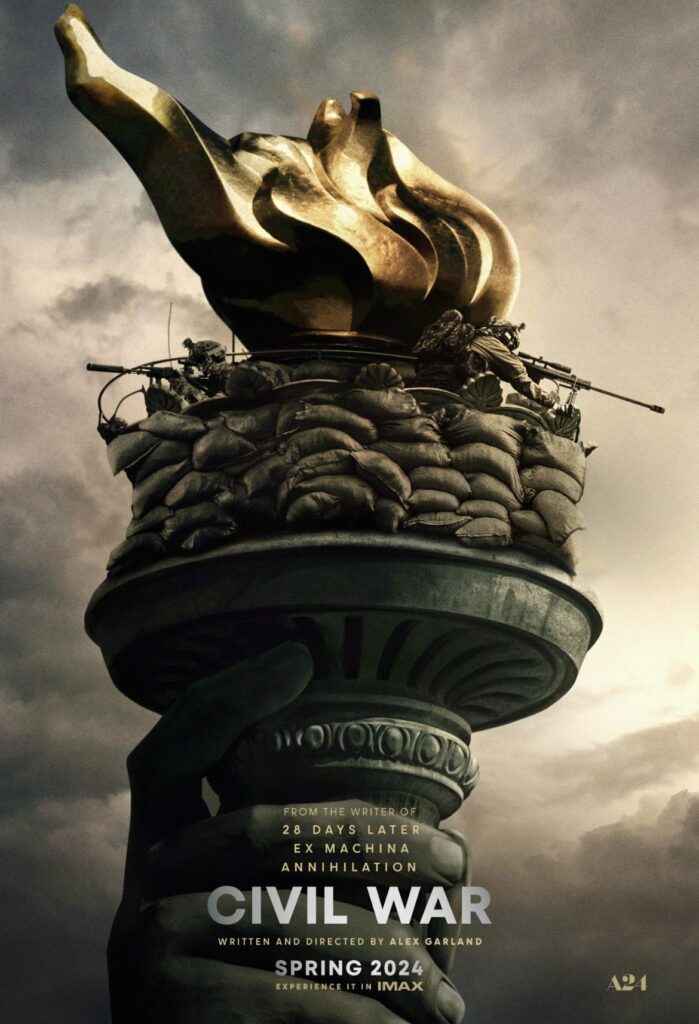 CIVIL WAR – Alex Garland
CIVIL WAR – Alex Garland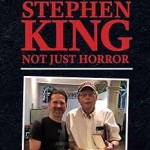 (English) STEPHEN KING NOT JUST HORROR – Hans-Ake Lilja
(English) STEPHEN KING NOT JUST HORROR – Hans-Ake Lilja (English) SACKHEAD:The Definitive Retrospective on FRIDAY THE 13th PART 2 – Ron Henning
(English) SACKHEAD:The Definitive Retrospective on FRIDAY THE 13th PART 2 – Ron Henning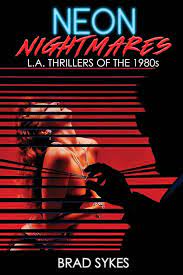 (English) NEON NIGHTMARES: L.A. Thrillers Of The 1980′s – Brad Sykes
(English) NEON NIGHTMARES: L.A. Thrillers Of The 1980′s – Brad Sykes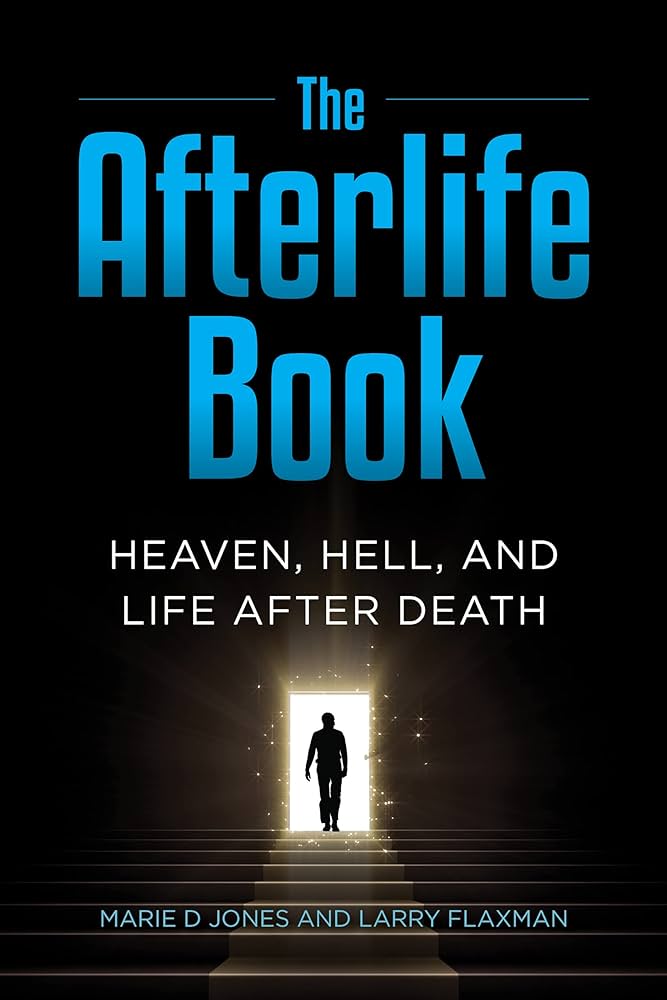 (English) THE AFTERLIFE BOOK: Heaven, Hell, And Life After Death – Marie D. Jones &
(English) THE AFTERLIFE BOOK: Heaven, Hell, And Life After Death – Marie D. Jones & (English) POPULATION PURGE – Brian Johnson
(English) POPULATION PURGE – Brian Johnson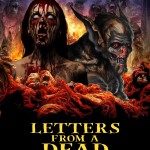 (English) LETTERS FROM A DEAD WORLD – David Tocher (review & interview)
(English) LETTERS FROM A DEAD WORLD – David Tocher (review & interview)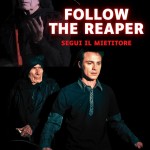 Trailer per FOLLOW THE REAPER di Eros Bosi
Trailer per FOLLOW THE REAPER di Eros Bosi